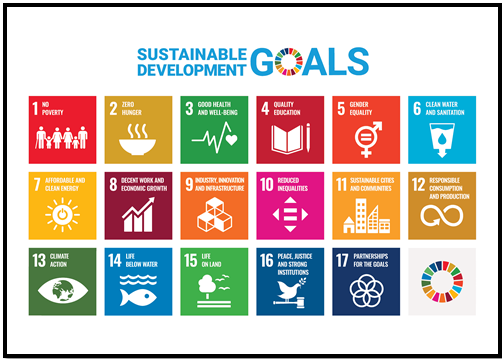“THE SHOW MUST GO ON: ENHANCING INDIA’S ECONOMIC GROWTH”
Syllabus:
- GS-3- Sustainable economic growth , policies and implementation ,Challenges and prospective solutions
Focus :
- The article emphasizes the need for the new government to focus on stimulating consumer demand to sustain India’s economic growth. While public investment and premium consumption have driven recent growth, broad-based demand, particularly in the private sector, remains weak.
- The piece suggests enhancing public sector employment and addressing fiscal constraints to boost overall demand and economic activity.
Source - TET
Current Economic Landscape
- Strong GDP Growth: India’s GDP is estimated to grow at 8.2%, surpassing most expectations.
- Sticky Inflation: Inflation remains moderate, not alarming, with stable global commodity prices, particularly oil.
- Tax Revenue Growth: Strong growth in direct taxes and GST has accelerated post-Covid fiscal consolidation.
Consumption and Investment Dynamics
- Limited Consumer Demand: Despite high public investment and luxury consumption, broad-based consumer demand remains low.
- Wealth Effects: A small segment benefits from stock market gains and high-end service jobs, driving premium consumption.
- Stagnant Exports: Merchandise exports struggle to gain global market share due to competitive pressures from China.
- Private Capex Weakness: Private capital expenditure remains subdued, with public investment driving recent growth.
Challenges to Aggregate Demand
- Fiscal Constraints: Despite a stable fiscal position, there is limited room for additional public investment due to high fiscal deficits.
- Low Capacity Utilization: Factory capacity utilization rates are low, around 75-76%, limiting the incentive for new investments.
- Competitive Pressures: Chinese manufacturing capacity and competitive pricing erode the market share of Indian manufacturers.
Need for Consumption Revival
- Structural Issue: Weak consumption is a persistent issue, not merely cyclical, predating the Covid-19 pandemic.
- Job Creation: Higher consumption requires more jobs, which can increase disposable incomes and boost demand.
- Public Sector Employment: The state needs to create jobs in critical areas such as education, healthcare, law enforcement, and infrastructure.
Strategies for Sustainable Growth
- Enhancing State Capacity: Investing in public sector jobs to build a larger consuming class and improve human resource capacities.
- Fiscal Policy Adjustments: Overcoming fiscal constraints to fund public employment and capacity enhancement programs.
- Local Funding Utilization: Leveraging local savings to fund state capacity enhancement while managing the current account deficit (CAD).
Public Investment and Infrastructure Development
- Sectoral Focus: Public investment should target sectors like healthcare, education, and infrastructure to create jobs and improve service delivery.
- Long-term Benefits: Enhanced public infrastructure can lead to sustained economic benefits by improving productivity and attracting private investment.
Addressing Fiscal Challenges
- Balancing Fiscal Discipline and Growth: Strategic fiscal expansion to fund necessary public investments while maintaining long-term fiscal health.
- Innovative Financing: Exploring innovative financing mechanisms to fund public sector initiatives without overly straining the fiscal budget.
Role of the Private Sector
- Incentivizing Private Investment: Creating a favorable environment for private sector investments through regulatory reforms and incentives.
- Public-Private Partnerships: Leveraging public-private partnerships to enhance infrastructure and service delivery.
Global Trade and Export Competitiveness
- Enhancing Export Capacity: Focusing on sectors where India can gain a competitive edge in global markets.
- Trade Policies: Implementing trade policies that support domestic manufacturers and exporters in competing globally.
| Major schemes:
Pradhan Mantri Awas Yojana (PMAY)
2. Smart Cities Mission
3. Pradhan Mantri Gram Sadak Yojana (PMGSY)
4. Atal Mission for Rejuvenation and Urban Transformation (AMRUT)
5. Bharatmala Pariyojana
6. Sagarmala Project
7. National Infrastructure Pipeline (NIP)
8. Renewable Energy Schemes
|
Conclusion
- Holistic Approach: A multi-faceted approach is required to boost demand, involving public investment, fiscal policy adjustments, and private sector engagement.
- Sustainable Growth: Ensuring that growth is inclusive and environmentally sustainable, addressing both immediate and long-term economic challenges.
- This detailed plan outlines the strategies the new government can adopt to address the existing economic challenges and stimulate sustainable growth.
Source:The Hindu
Associated Article :
https://universalinstitutions.com/indian-economy-growth-and-considerations/
Mains Practice Question :
GS-3
“Discuss the challenges and strategies for the new Indian government to stimulate consumer demand and ensure sustainable economic growth. What role can public sector employment and fiscal policies play in this context?”(250 words)




